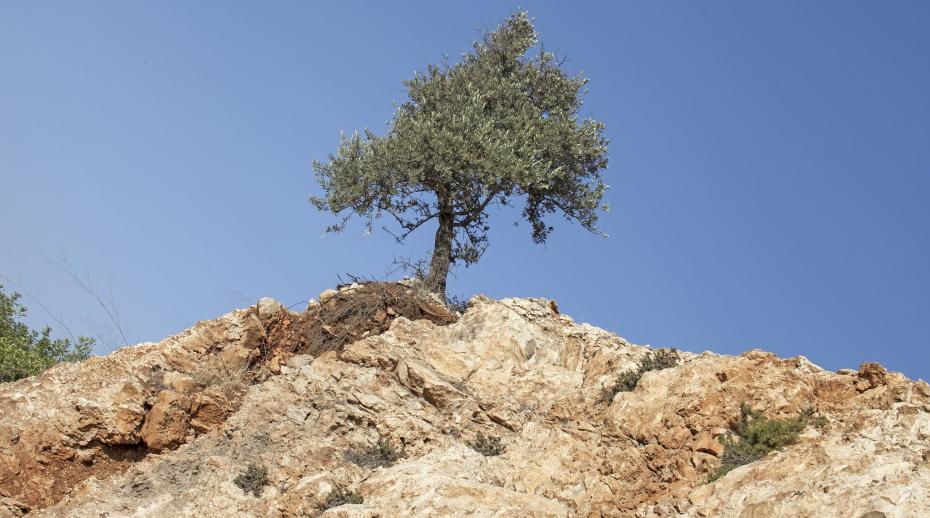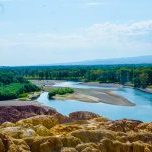 Olive tree. Photo: Zeevveez/Flickr10 November 2020Shivan Fazil and Dr Dylan O’Driscoll
Olive tree. Photo: Zeevveez/Flickr10 November 2020Shivan Fazil and Dr Dylan O’Driscoll
Stockholm, Nov.25(ChinaEurope) — The scars left by the Islamic State group’s three-and-a-half-year occupation in northern Iraq are deep. Between 2014 and 2017, hundreds of thousands of Iraqis were killed, millions were displaced or succumbed to starvation or disease, as a result of Islamic State’s occupation and the military campaign to defeat it. Atrocities committed by the group included a genocide of the Yezidi minority in their ancestral lands in Sinjar, northern Iraq, as well as the killing and abduction of thousands of Yezidi women and girls. The massacre perpetrated by Islamic State at Kojo, Sinjar, home to Nobel Peace Prize laureate Nadia Murad, was one of the group’s most heinous crimes. The costs of damages are estimated to be in billions of US dollars. The destruction to Iraq’s cultural heritage was just as grave.
Islamic State particularly targeted minority communities living in Nineveh province in northern Iraq—Christians, Yezidis, Shabaks and Kaka’i, among others. The Nineveh Plains has historically been home to many cultural groups living side by side, and represents an important part of Iraq as a multicultural society. However, it is also a disputed territory,where since 2003 the Government of Iraq and the Kurdistan Regional Government have competed for administrative authority. This competition was partly responsible for the failure to deliver on the needs of the region’s population, and gradually increasing insecurity and tension, including between the minority communities themselves.
The arrival of Islamic State forces saw a far more rapid and sudden deterioration. Members of these minority communities were executed, enslaved or forcibly converted to Islamic State’s radical form of Sunni Islam. Some fled before the group’s arrival, while it forcibly displaced many others. Their sources of livelihood, such as farmland, olive groves and livestock, were also devastated.
The deliberate damage that Islamic State inflicted on these groups’ cultural identities is far less often discussed. It destroyed historical and cultural heritage sites, cemeteries, shrines, and other sacred objects. It desecrated religious structures such as churches, mosques and temples, or used them for military purposes. In even less tangible ways, Islamic State’s actions also undermined the communities’ ability to perform cultural practices, such as rituals and pilgrimages. In short, Islamic State sought to prevent them from living as Christians, Yezidis, Shabaks or Kaka’i. This was a deliberate bid to erase the traces of centuries of ethnosectarian coexistence in the region, a notion that the group vehemently rejects.
Erasing cultural identity
A joint assessment by the World Bank and the Government of Iraq estimates the cost of damages to historic religious buildings by Islamic State at around IQD 56.2 billion (roughly US$47 million), with some of the oldest and most prominent sites destroyed or vandalized. The group also systematically destroyed farms, sabotaged wells and irrigation systems, cut down trees, and stole machinery and livestock, eliminating the livelihoods on which communities depended. The damage that its occupation inflicted on the social fabric of Nineveh Plains—on the diverse communities and the way they coexist—is intrinsically connected to this, but much harder to value.
For example, olives play a central and multifaceted role in many communities. In Bashiqa—a town north of Mosul and home to many Christians and Yezidis—Islamic State devastated olive groves, some of them centuries old, containing hundreds of thousands of olive trees. While the town is now liberated, its once-thriving olive business, specializing in olive oil and olive soap, will take years to recover.
But olive trees also have a significance far beyond their economic value for many of Nineveh’s minority groups. They are symbols of peaceful coexistence and objects of veneration. An annual ceremony at Yezidis’ holiest religious site, a temple in Lalish Valley, sees volunteers crushing olives harvested on the temple grounds. The oil produced in this way is used for religious rituals and ceremonies throughout the year. Christians in Tal Keif and Qaraqosh carry olive branches during processions on Palm Sunday.
Animal husbandry was another economic mainstay of many communities, and was devastated by losses of livestock during the occupation, as animals were stolen, slaughtered or abandoned. But livestock are also used for animal sacrifice by Yezidis as well as other minority groups, and the meat is often shared among the community, particularly its poorer members. Such sacrifices may be used to fulfil vows made in times of distress, and play an important role in Yezidi New Year celebrations. Among the Kaka’i, animal sacrifice forms part of the jam ceremony, which centres on religious teaching and singing of sacred songs, and it may also be used to fulfil vows or on special occasions.
Bringing culture into reconstruction
Reconstruction in Nineveh to date has mainly focused on the more physical, visible aspects, such as rebuilding houses and infrastructure, demining and restoring livelihoods. These are undoubtedly important for facilitating the return of the hundreds of thousands of people who are still displaced.
But if the aim is to re-establish these communities for the long term, more attention needs to be given to reinstating cultural identity, and the ability to practice unique customs, rites and traditions. These underpin the communities’ sense of belonging—in Nineveh and in Iraq.
If reconstruction efforts in Nineveh are not sensitive to issues of cultural identity, this increases the risk that these communities will simply drift apart, with returnees eventually migrating to other parts of the country or even further afield. That would be a tragic loss to Iraq’s cultural heritage and its rich tapestry of religious and cultural pluralism. It would also pave the way for new fault lines and forms of competition over the territorial control of Nineveh, and further violence may follow.
About this project
Through the ‘Cultural Restoration Programme for Northern Iraq’ SIPRI—in partnership with Purdue University, the University of Notre Dame, Indiana University and the University of Duhok—is currently undertaking research to better understand the needs of local communities in Nineveh in terms of reinstating cultural practices. The project is funded by the US Agency for International Development (USAID) through LASER PULSE. The findings will feed into an implementation phase that aims to help reinstate cultural practices in the Nineveh Plains.
Source SIPRI

